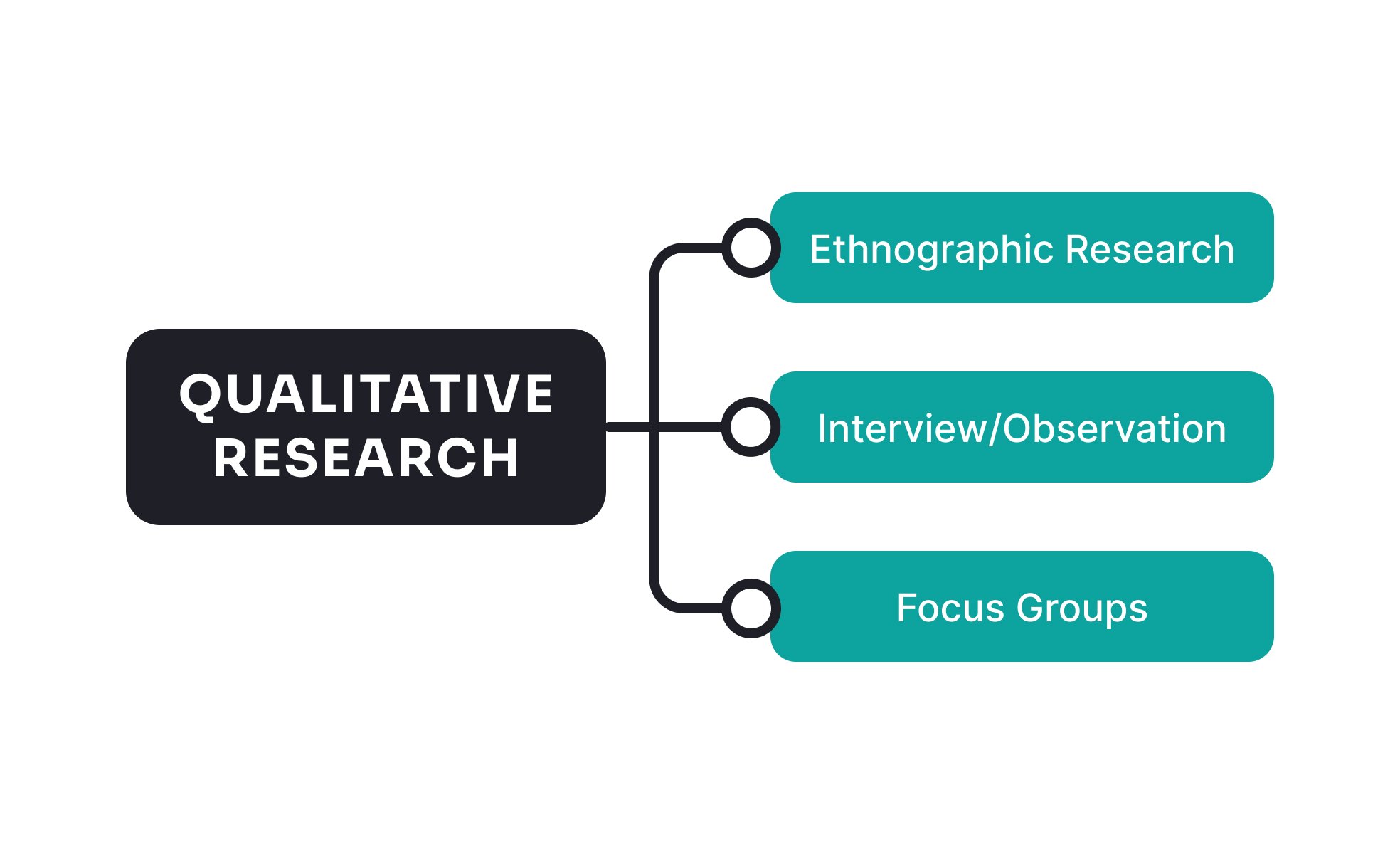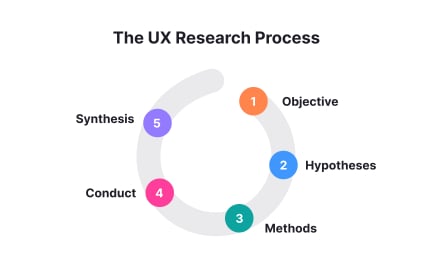Qualitative Research
Qualitative research explores user behavior and opinions through interviews, field studies, or open-ended feedback to find patterns and insights.

What is Qualitative Research?
Your product decisions are based on assumptions about user needs and behaviors rather than deep understanding of customer motivations, leading to solutions that miss the mark despite seeming logical from internal perspectives.
Most teams collect quantitative data about what users do but lack qualitative insights about why they behave in specific ways, missing the context and motivation that drives effective product decisions.
Qualitative research is the systematic investigation of user behaviors, motivations, attitudes, and experiences through methods like interviews, observations, and contextual inquiry that provide deep insights into the "why" behind user actions and preferences.
Teams using strong qualitative research achieve 50% better product-market fit, 40% higher user satisfaction, and significantly more innovative solutions because they understand user needs that quantitative data alone cannot reveal.
Think about how companies like IDEO use ethnographic research to understand user contexts and unmet needs, or how Netflix conducts qualitative research to understand viewing motivations that inform content strategy and interface design.
Why Qualitative Research Matters for Product Success
Your product development is based on incomplete understanding of user needs because you know what users do but not why they do it, leading to solutions that address symptoms rather than root causes.
The cost of skipping qualitative research compounds throughout product development. You build features that seem logical but don't resonate with users, miss opportunities to solve real problems, and compete based on assumptions rather than user insights.
What systematic qualitative research delivers:
Deeper user understanding through insights about motivations, emotions, and contexts that influence behavior but aren't visible in usage analytics or survey data.
When you understand why users behave in specific ways, you can design solutions that address root causes rather than just symptoms.
Better product-market fit because qualitative research reveals unmet needs and usage contexts that create opportunities for innovative solutions that users genuinely value.
More innovative solutions through understanding of user frustrations and aspirations that inspire breakthrough product concepts rather than just incremental feature improvements.
Stronger design decisions because qualitative insights provide user perspective that guides interface design, feature prioritization, and user experience optimization.
Enhanced stakeholder alignment as qualitative research provides compelling user stories and insights that build internal understanding and support for user-centered decisions.
Advanced Qualitative Research Strategies
Once you've established basic qualitative research capabilities, implement sophisticated user understanding and insight generation approaches.
Longitudinal Research Studies: Conduct research over extended time periods to understand how user behavior and needs change over time rather than just capturing snapshot insights.
Participatory Research Methods: Involve users as research collaborators who help identify research questions and interpret findings rather than just serving as research subjects.
Cross-Cultural Research: Conduct qualitative research across different cultural contexts to understand how user needs and behaviors vary across global markets.
Behavioral Context Research: Study users in their natural environments and contexts rather than artificial research settings to understand real usage patterns and constraints.
Qualitative research in UX design involves methods such as interviews, usability testing, observations, and focus groups to gain in-depth insights into users' behaviors, experiences, and perceptions. It aims to uncover the qualitative aspects of the user experience, providing rich and contextual information that helps understand user needs, motivations, and pain points.
Qualitative research is valuable in UX design when there is a need to explore and understand users' subjective experiences, uncover complex user behaviors, or gather in-depth insights into specific user segments. It helps in identifying user preferences, uncovering usability issues, and generating ideas for improving the user experience.
Common qualitative research methods used in UX design include:
- In-depth interviews: Conducting one-on-one interviews with users to explore their experiences, behaviors, and perceptions related to a product or service.
- Usability testing: Observing and gathering qualitative feedback from users while they interact with a product or interface, identifying usability issues and areas for improvement.
- Field studies and contextual inquiry: Conducting observations and interviews in the users' natural environment to understand their real-world experiences and behaviors.
- Diary studies: Asking users to keep a journal or record their experiences over a specific period, providing insights into their daily interactions and experiences.
Learn more on the topic in our Qualitative UX Research Methods lesson.
Recommended resources
Courses

UX Research

Introduction to Product Management

Color Psychology
Lessons

Design Processes & Research Methods

Organizing UX Research

Qualitative UX Research Methods
Assessments

Qualitative Research

Maze
Projects

User Persona for TikTok

Design a welcome screen for a smart fridge to help educate kids about food waste














